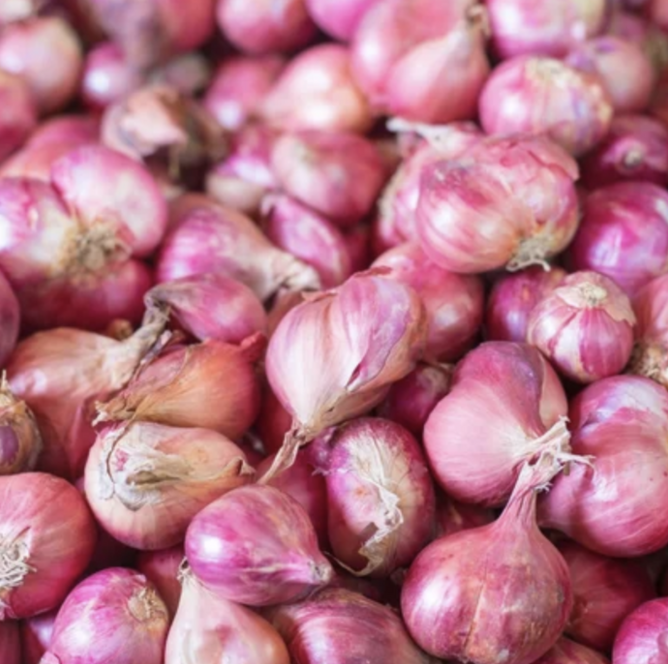Shallots
What is it?
Shallots look like smaller, elongated onions. It is easy to confuse shallots with onions because of its appearance, but is in fact its own type of vegetable. Onions grow individually, while shallots, similar to garlic, grow in clusters on the plant and when mature have a much stronger and sweeter flavor. The flesh of shallots resemble a red onion, but rather than having rings like onion, shallots are typically divided into cloves. Shallots are traditionally linked to French cuisine, but can be used in a wide variety of dishes.
What does it taste like?
Shallots have a delicately sweet flavor to them, with a hint of sharpness. The flavor is often compared to onions, but onions tend to have a sharper, more intense bite to them. Compared to their younger counterpart (Spring shallots), mature shallot bulbs have a much stronger flavor to them, and lean more garlic-like.
What to do with it?
Shallots are a very versatile ingredient. You can substitute shallots into nearly any recipe that calls for onions, but make sure to maintain the same volume (i.e one small onion converts to several average size shallots). Also keep in mind that like garlic, shallots should not be browned because that can cause them to have a more bitter flavor, rather than sweet. Make a sauce or stock with shallots incorporated to give an extra kick of flavor to an endless amount of soups, sauces, roasts, or poultry dishes.
How to store it?
You want to keep shallots in a cool, dark, and dry place. The fridge is not ideal, but they can keep for about 2 weeks when refrigerated. Ideally shallots should be stored in a mesh bag in a pantry, garage, or basement and made sure to be kept dry. Doing this can keep shallots looking and tasting fresh for 1-3 months, depending on the room temperature and humidity.



